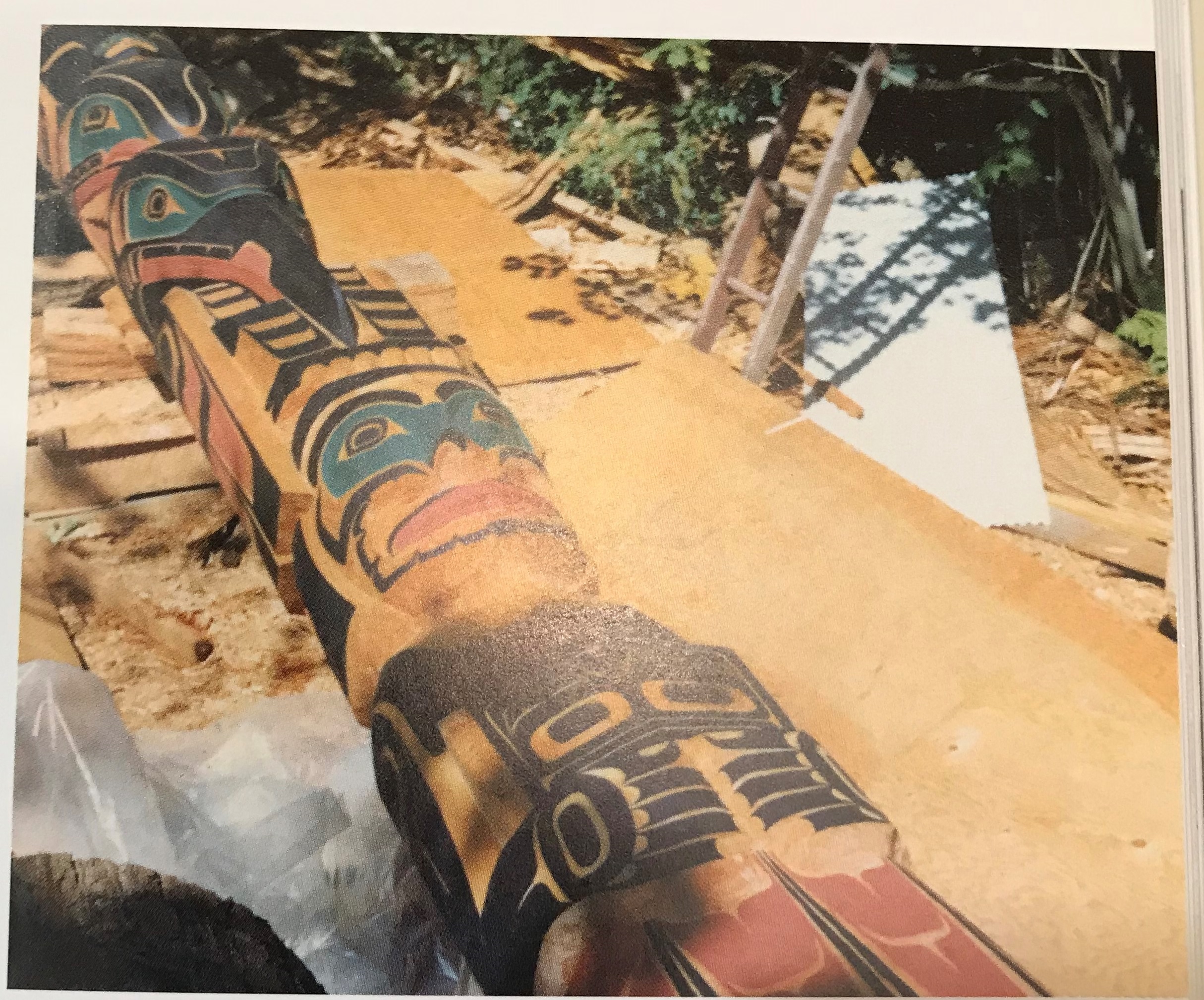When the pole was removed at the end of 2005 it was largely due to weather damage. The convention nowadays is to cap exposed poles with copper to prevent water ingress. Of course, the structure is timber, so it will always be susceptible to expansion and shrinkage.
Totem poles are best when the logs have been well seasoned. Judging by the cracks on this one, the original log was relatively fresh. Doug Cranmer carved 30 poles in the year this one was carved, and suitable trees don’t, ahem, grow on trees, so it’s not surprising. The result of the weather other than the rot is that this one has a number of large, but not terminal, cracks, too. Barry Willetts’s account of the pole’s arrival indicates that one of those cracks, at the base, was already there, and could well explain some of the problems that developed. Add to that, when it was recovered from storage it was clear that it had been painted over in thick layers of paint—necessary for preservation, of course—that had taken away some of the detail (one such necessary paint job was made in 1980 by Ron Platt and Mike Lucas.
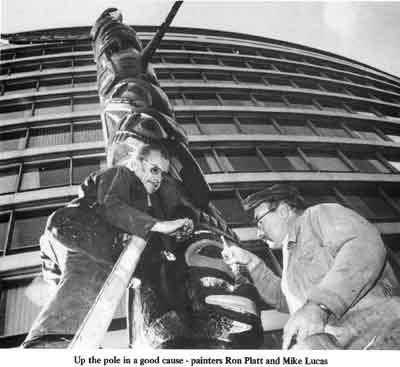
Ron Platt and Mike Lucas painting the pole in 1980. Photo from manchesterliners.co.uk/totempole.htm.
When Kevin Cranmer first came over to view the pole, his main job was inspecting it for the above damage and determining whether it could indeed be saved. His verdict, thankfully, was that it was essentially stable and that it could be fully restored to its former glory. Totem poles like this are generally carved from Western Red Cedar. This one is no exception, in spite of mistaken accounts that it is Columbian Pine. So back in 2009, the team arranged for some strips of Cedar to be shipped over from Canada by Silva Timber for the repairs. Here is how the restoration proceeded from there.
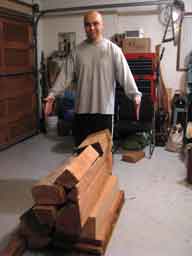
Kevin Cranmer with the timber supplied by Silva Timbers.
Photo credit: Kevin Cranmer.
Burnaby Stone Care, specialists in the precision cleaning of delicate surfaces, stripped the old paint off the pole using air abrasion technology and a solution of Flurok from copper smelting mixed with glass. The result, as this video shows, was excellent. Read more about the process here, too.
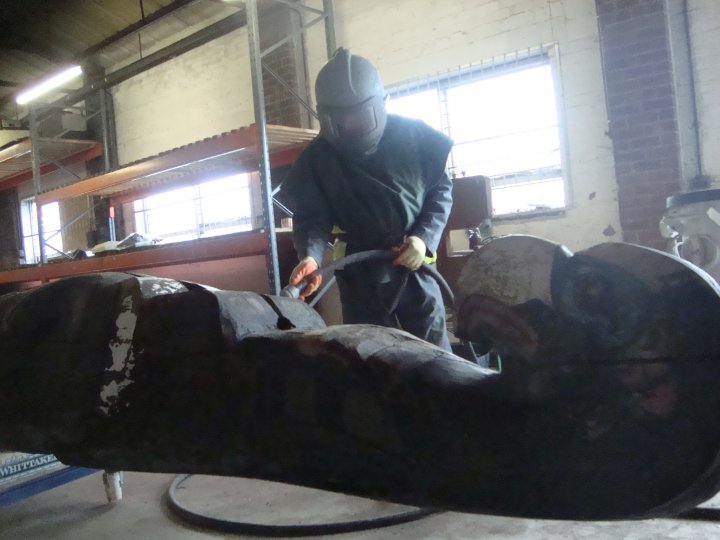
The air abrasion process
The cedar sent over by Silva Timber was used to replace the rotten section at the base of the pole, which was cut out and the strips scarfed and glued into position. These strips will ultimately be recarved to reform the Chief’s skirt. Photos indicate that there were toes peeking out from underneath the skirts, which will also be recarved.
Other large cracks in the pole were filled and the whole sanded. In the course of checking over the pole, Kevin and Steve noted holes in the top of the topmost figure’s head, indicating two things: firstly that it must have had horns originally; and secondly that this confirmed the figure was no mere eagle but a thunderbird, a spirit being. New horns were carved…
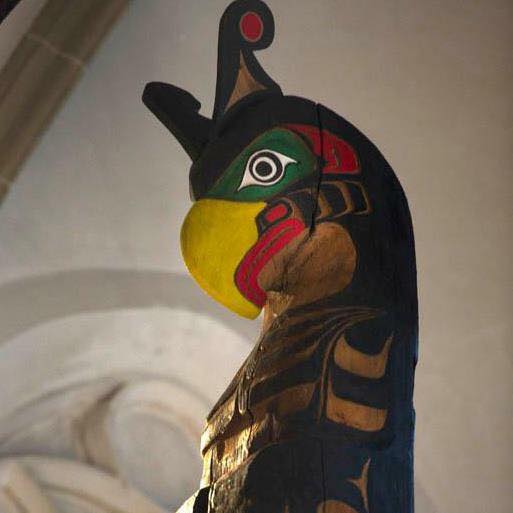
The pole complete with new horns.
The pole was then repainted carefully according to the traditional colours—black, red, yellow, and green—used by the ‘Namgis. This work, completed by Bruce, Edgar, and Kevin, is very delicate. It is work, Bruce remembered, that Doug himself didn’t much enjoy doing!
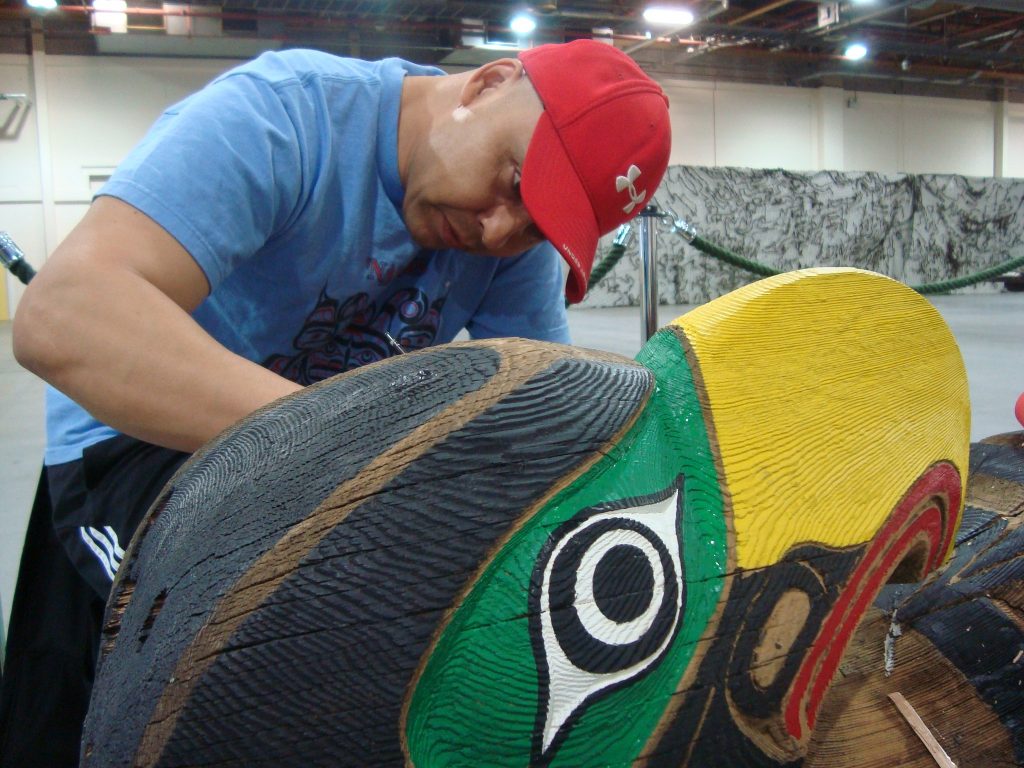
In 2018, Bruce and Kevin inspected the pole once again. This was the first time they had seen it since 2010, of course, and they were pleased with its condition, not least because it had been to Amsterdam and back and spent a number of years in a council warehouse in the intervening years.
When they return for the final push they will complete the recarving of the lowest portion of the pole and finish filling and preparing the larger cracks. At this stage, the entire pole will be whitewashed and the painting all redone to the highest standard. This whitewashing is common to contemporary pole painting among the ‘Namgis, although it sends shivers down the spines of the museum people! This pole, however, is very much a living pole, the connections between Salford and Alert Bay current and dynamic. Whitewashing the pole will significantly enhance both the colours and the detail, as well as being a tribute to that vitality.

A recently raised pole in Alert Bay.
